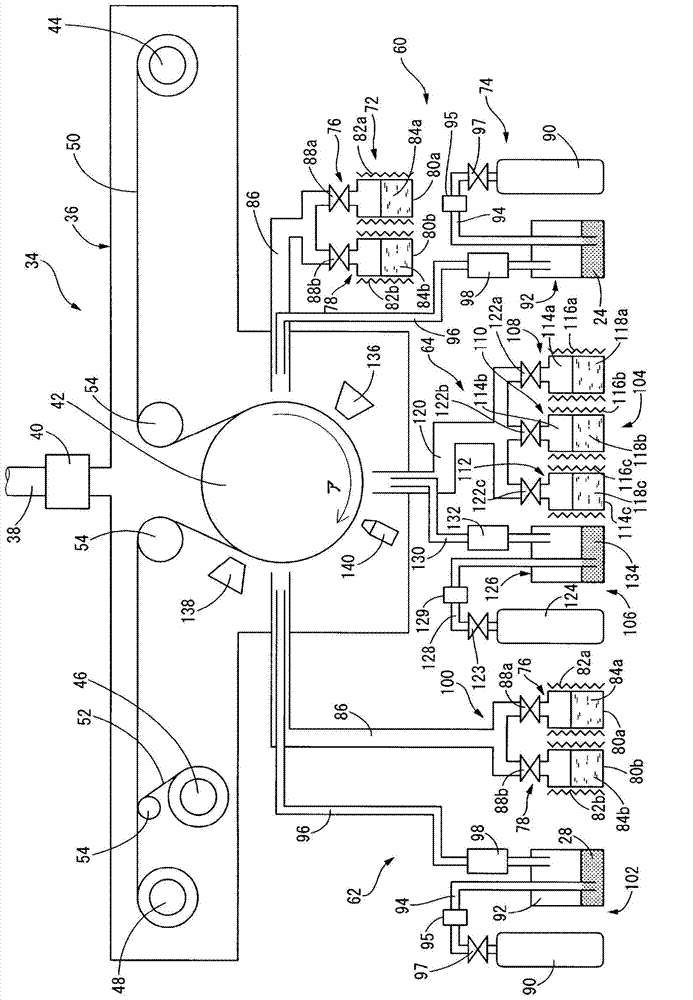Process and device for producing lithium-ion secondary battery
A technology for a secondary battery and a manufacturing method, which is applied in the field of new structures of manufacturing devices, can solve the problems of long cycle time, low bending strength of lithium ion secondary batteries, and lack of flexibility and flexibility.
- Summary
- Abstract
- Description
- Claims
- Application Information
AI Technical Summary
Problems solved by technology
Method used
Image
Examples
Embodiment Construction
[0044] Hereinafter, in order to clarify the present invention more specifically, embodiments of the present invention will be described in detail with reference to the drawings.
[0045] First, in figure 1 In , an example of a lithium ion secondary battery manufactured by the method of the present invention is shown in its partial longitudinal section. from the figure 1 It can be seen that lithium ion secondary battery 10 of the present embodiment has laminated body 18 as one of the power generating elements, in which film-shaped positive electrode layer 12 and negative electrode layer 14 are laminated with thin-film solid electrolyte layer 16 interposed therebetween. In addition, the positive electrode side current collector 20 is laminated on the side opposite to the side of the solid electrolyte layer 16 of the positive electrode layer 12 of the laminate 18, and the positive electrode side current collector 20 is stacked on the side of the negative electrode layer 14 and t...
PUM
| Property | Measurement | Unit |
|---|---|---|
| particle size | aaaaa | aaaaa |
| particle size | aaaaa | aaaaa |
| thickness | aaaaa | aaaaa |
Abstract
Description
Claims
Application Information
 Login to View More
Login to View More - R&D
- Intellectual Property
- Life Sciences
- Materials
- Tech Scout
- Unparalleled Data Quality
- Higher Quality Content
- 60% Fewer Hallucinations
Browse by: Latest US Patents, China's latest patents, Technical Efficacy Thesaurus, Application Domain, Technology Topic, Popular Technical Reports.
© 2025 PatSnap. All rights reserved.Legal|Privacy policy|Modern Slavery Act Transparency Statement|Sitemap|About US| Contact US: help@patsnap.com



